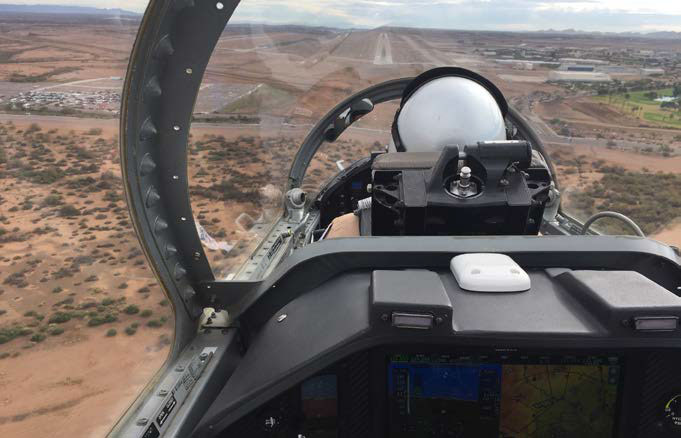
Upset Prevention & Recovery Training (UPRT) has come a long way. Through decades of testing, standardizing, refining, and more testing, the industry has honed in on key components that make UPRT highly effective at instilling core skills and critical intuitive responses in pilots and thereby mitigating the risk of Loss of Control In-flight, the leading cause of fatalities in civilian aviation. For more information, please have a look at a letter from the APS President, Paul BJ Ransbury, to the industry and 1000s of APS customers titled The Global Standard for Professional Jet Pilot UPRT. APS offers live on-aircraft jet upset training in three main platforms:
- SIAI-Marchetti S211,
- Dornier Alpha Jet, and
- Douglas A4 Skyhawk
In his article “Stomaching Jet Upsets,” AIN writer Matt Thurber relates his first-hand experience in both the APS SIAI-Marchetti S211 and A4 Skyhawk. Mr. Thurber, a professional jet pilot himself, discusses some of the critical components of UPRT and how, when integrated through expert training, they come together to transform a pilot’s intuitive capabilities as well as core skills and ability to recognize, prevent, and if necessary, recover from an unexpected upset. The following excerpt introduces the riveting description of Matt’s experience practicing UPRT in two different types of high-performance all-attitude jets at APS headquarters in Arizona.
Stomaching Jet Upsets
By Matt Thurber
Original article: Stomaching Jet Upsets on AIN
We’re at almost 40,000 feet, and I’m pulling back on the beefy stick of a two-seat Douglas TA-4J Skyhawk single-engine jet trainer, about to make the airplane stall. “Keep pulling,” says Phillip “OP” Oppenheimer, APS instructor and Top Aces chief pilot, over the intercom as the airspeed bleeds off and the outside world tilts up further–“pull, pull, pull,” just like a pilot might mistakenly try to stay level as airspeed decays during a high-altitude upset. Finally, as the angle-of-attack needle crawls to the maximum AOA (at that altitude) of about 12 to 14 units and the jet’s nose points well above the horizon, the airframe shudders and it’s time for the recovery procedure: push to reduce AOA, roll wings level, add thrust and…wait, wait, wait…
 Read the full article on AIN.com:
Read the full article on AIN.com:
“Getting the Stomach for Upsets”




Comments: